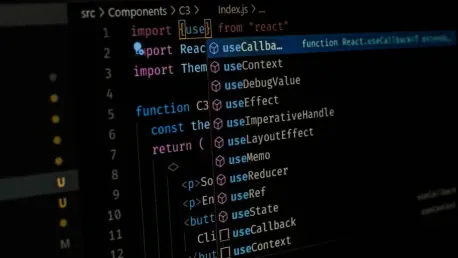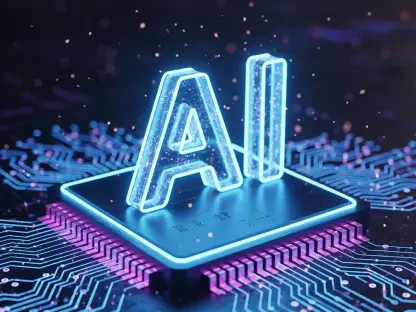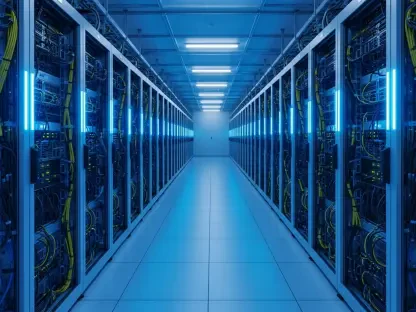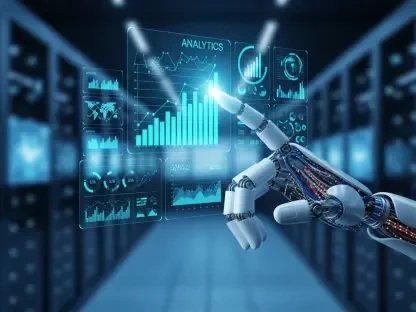In the rapidly evolving technological landscape, integrating artificial intelligence (AI) into DevSecOps has become essential to fortifying security measures throughout the software development lifecycle (SDLC). Traditional security methods often fall short in addressing the demands of modern development pipelines, making the blend of AI and DevSecOps pivotal for robust software security.
Understanding DevSecOps
The Foundations of DevSecOps
DevSecOps is a holistic approach that merges development, security, and operations into a seamless process. This integrated methodology aims to embed security practices across all phases of the SDLC, ensuring a secure and continuous CI/CD pipeline to produce high-quality software. By breaking down silos between teams, DevSecOps fosters collaboration and enhances the overall software development process. With security embedded from the initial phases, it ensures that vulnerabilities are identified and mitigated early, leading to a more resilient and secure final product.
The traditional software development approach often treats security as an afterthought, leading to increased risks and potential breaches. DevSecOps, on the other hand, ensures that security measures are an integral part of the development process from day one. This preventative approach not only reduces the chances of vulnerabilities making it into production but also reduces the time and cost associated with security fixes later in the development cycle. By promoting a culture of shared responsibility among development, security, and operations teams, DevSecOps achieves a higher level of security and efficiency.
The Importance of DevSecOps Today
With cyber threats becoming increasingly sophisticated, the necessity for incorporating security within the development process has never been more critical. DevSecOps has shifted from being a nice-to-have to an essential practice for organizations looking to protect their software from modern cyber threats. The increasing complexity and frequency of cyberattacks necessitate robust security measures that can adapt and respond swiftly. In this context, DevSecOps provides a framework that integrates continuous security practices into the software development cycle, ensuring proactive threat management.
The traditional reactive security approach is no longer sufficient in the face of today’s dynamic threat landscape. DevSecOps offers a proactive approach that allows organizations to stay ahead of potential threats by continuously monitoring and addressing security concerns in real-time. By incorporating security into every stage of the SDLC, DevSecOps helps organizations create a security-first mindset, ensuring that security is not compromised at any stage of development. This paradigm shift is essential in protecting sensitive data, maintaining customer trust, and ensuring compliance with regulations.
How AI Enhances DevSecOps
Automated Threat Detection
AI plays a crucial role in enhancing DevSecOps by automating threat detection. AI tools can analyze code and commit histories to identify security vulnerabilities and anomalies using machine learning algorithms for real-time pattern analysis. This enables swift resolution of issues, minimizing potential damage. The ability of AI to process vast amounts of data quickly and accurately makes it an invaluable tool in identifying and mitigating security threats that might otherwise go unnoticed. This proactive approach to threat detection helps organizations stay ahead of potential attackers.
By leveraging AI’s capabilities, organizations can move from a reactive to a proactive security posture. The automated threat detection provided by AI reduces the likelihood of human error, ensuring that vulnerabilities are identified and addressed promptly. Furthermore, machine learning algorithms continuously improve over time, enhancing their ability to detect new and emerging threats. This constant evolution makes AI an essential component in maintaining a robust security posture in an ever-changing threat landscape.
Elevating Code Review Processes
AI also improves code review processes by automating reviews and ensuring adherence to security best practices. These tools can uncover complex vulnerabilities that may otherwise go unnoticed during manual reviews or with traditional static analysis tools, making the code more secure. Automated code reviews conducted by AI ensure that security checks are consistent, thorough, and free from human oversight biases. This stringent scrutinization leads to higher code quality and robust security measures, reducing the risk of security breaches post-deployment.
Automating code reviews with AI offers several advantages, including speed and accuracy. AI can analyze large codebases quickly, providing immediate feedback to developers on potential security issues. This rapid feedback loop allows for faster remediation of vulnerabilities, reducing the window of exposure. Additionally, AI can identify patterns and trends in code that may indicate underlying security issues, providing valuable insights that can help improve overall code quality. By incorporating AI into the code review process, organizations can ensure that their code is not only functional but also secure.
Advanced Security Testing with AI
SAST and DAST Integration
AI enhances security testing by enabling static application security testing (SAST) and dynamic application security testing (DAST). These tools help identify security weaknesses before deployment, ensuring applications are secure and reducing risk post-deployment. SAST analyzes source code to detect vulnerabilities, while DAST evaluates the application in its running state to identify security issues that can only be discovered during execution. The combination of these two testing methodologies provides a comprehensive approach to security testing, ensuring that both code-level and runtime vulnerabilities are addressed.
Integrating AI into SAST and DAST processes enhances their effectiveness and efficiency. AI-powered tools can identify patterns and anomalies that may indicate security vulnerabilities, providing developers with actionable insights to address these issues. By leveraging AI, organizations can automate and streamline their security testing processes, ensuring that security checks are thorough and continuous. This comprehensive approach to security testing helps organizations build more secure applications that are resilient to attacks, both during development and in production.
Real-Time Monitoring
Machine learning algorithms equip AI with the ability to monitor applications and environments nearly in real-time. This constant vigilance allows for the prompt detection and mitigation of suspicious activities, enhancing overall security and incident response. Real-time monitoring provided by AI enables organizations to detect and respond to security incidents as they occur, reducing the potential impact of breaches. This proactive approach to monitoring and response ensures that security threats are addressed swiftly, minimizing the potential damage to the organization.
AI’s real-time monitoring capabilities extend beyond simple anomaly detection. By analyzing data from multiple sources, AI can provide a comprehensive view of the security landscape, identifying patterns and trends that may indicate potential threats. This holistic approach to monitoring allows organizations to address security issues proactively, ensuring that vulnerabilities are identified and mitigated before they can be exploited. By incorporating AI into real-time monitoring processes, organizations can enhance their ability to detect and respond to security incidents, ensuring a robust security posture.
Predictive and Preventive Security Measures
Predictive Analysis for Future Threats
AI’s ability to analyze existing data and trends to predict future security threats offers organizations the foresight needed to bolster their defenses proactively. This predictive analysis helps stay a step ahead of potential attackers, enabling organizations to implement preventive measures before new threats can materialize. By leveraging AI’s predictive capabilities, organizations can identify emerging threats and adapt their security strategies accordingly, ensuring that they are always one step ahead of potential attackers.
Predictive analysis provided by AI helps organizations build a robust security posture that can adapt to the evolving threat landscape. By analyzing historical data and identifying patterns, AI can predict future security threats with a high degree of accuracy. This foresight allows organizations to allocate resources effectively, focusing on areas most likely to be targeted by attackers. By taking a proactive approach to security, organizations can reduce the likelihood of successful attacks and ensure that their defenses are always up to date.
Streamlining Compliance
AI helps automate the enforcement of security policies and regulations, reducing human error and ensuring consistent adherence to industry standards. This streamlined compliance process also saves time and resources, allowing organizations to focus on their core business activities. By automating compliance processes, AI ensures that security policies are consistently and accurately enforced across the organization, reducing the risk of non-compliance and potential penalties. This consistent approach to compliance helps organizations maintain a strong security posture while meeting regulatory requirements.
Automation provided by AI simplifies the complex and time-consuming process of compliance management. By continuously monitoring compliance with security policies and regulations, AI ensures that organizations are always in adherence with industry standards. This proactive approach to compliance reduces the burden on security teams, allowing them to focus on more strategic initiatives. By leveraging AI to streamline compliance processes, organizations can ensure that they are always meeting regulatory requirements while maintaining a strong focus on security.
Challenges and Future Prospects
Addressing Integration Challenges
Integrating AI into DevSecOps presents challenges, such as the need for reliable data to train AI models. Organizations must ensure their data is accurate and comprehensive to maintain the efficacy of AI in threat detection. Data quality is critical to the success of AI models, as inaccurate or incomplete data can lead to false positives and negatives, reducing the effectiveness of threat detection. Organizations must establish robust data governance practices to ensure that their AI models have access to high-quality data.
Another challenge in integrating AI into DevSecOps is the need for skilled personnel who can manage and maintain AI systems. Organizations must invest in training and development to ensure that their teams have the necessary skills to leverage AI effectively. Additionally, as AI systems evolve, organizations must continuously update and maintain their AI models to ensure they are effective against new and emerging threats. Addressing these challenges is critical to the successful integration of AI into DevSecOps and maximizing its potential benefits.
The Future of AI in DevSecOps
As AI continues to advance, its role in DevSecOps will become increasingly indispensable. The convergence of these technologies promises to revolutionize security practices, enabling organizations to deploy secure applications more swiftly and confidently. AI’s ability to process vast amounts of data quickly and accurately will enhance threat detection and response, providing organizations with the tools needed to stay ahead of emerging threats. By leveraging AI, organizations can build a robust security posture that is resilient to the evolving threat landscape.
The future of AI in DevSecOps is bright, with continuous advancements in AI technology promising to further enhance security practices. As AI models become more sophisticated, their ability to detect and respond to security threats will improve, providing organizations with a higher level of protection. Additionally, AI’s ability to adapt and learn from new data will ensure that security practices are always up to date, keeping organizations ahead of potential attackers. By embracing AI, organizations can ensure that they are well-equipped to handle the evolving threat landscape and maintain high standards of software development security.
Conclusion
In today’s fast-paced tech world, the integration of artificial intelligence (AI) into DevSecOps is becoming crucial for strengthening security throughout the software development lifecycle (SDLC). Modern development pipelines present unique challenges that traditional security methods struggle to meet, making the combination of AI and DevSecOps critical for enhancing software security.
Traditional security methods often fail to keep up with the demands of contemporary development practices. This is where AI steps in, offering advanced techniques to detect vulnerabilities and automate security processes. By merging AI with DevSecOps, organizations can ensure that security is ingrained in every stage of development, from initial design to deployment.
Moreover, AI can predict potential threats by analyzing patterns and behaviors, thus allowing proactive measures to be taken before an actual attack occurs. This integration not only saves time but also significantly reduces the risk of security breaches, making it a pivotal aspect of modern software security strategies.









